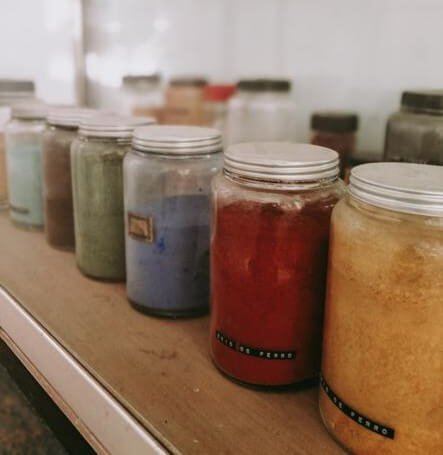
safe + circular + Just
INADVERTENT PCB (iPCB) PIGMENT RESOURCE
Polychlorinated biphenyl compounds (PCBs) are a class of chemicals with 209 different congeners depending on the number and location of chlorine atoms on the biphenyl structure. While the deliberate use of PCBs was banned UNDER TSCA in 1976, PCB’s that are inadvertently generated during manufacturing are allowed, such as in the production of certain pigments. Selecting pigments that do not contain inadvertently generated PCBs (iPCBs) can improve water quality, the ability to recycle paper and cardboard, and improve a primary food source for tribal communities.
The iPCB Pigment Resource supports those who procure organic pigments for use in coatings, plastics, printing inks and many other products in identifying alternatives that are not manufactured with chlorinated solvents and/or do not have chlorine in their molecular structure, and are therefore unlikely to contain PCBs inadvertently generated during manufacturing.
Pigments are ubiquitous in consumer products. Manufactured products and the pigments within them inevitably end up in the environment. Some of these iPCB-containing wastes are diverted to recycling and wastewater treatment facilities. Even with the most advanced, state-of-the-art treatment systems, low levels of iPCBs continue to enter waterways above Washington State’s water quality standards.

whAT
A Resource FOR PROCUREMENT PROFESSIONALS
TThe iPCB Pigment Resource is a free searchable dataset of nearly 400 pigments organized by chemical name, CAS#, color index number, application, availability in the US market, and whether they were manufactured using chlorinated solvents or are organochlorine molecules themselves. The tool can be used to help identify pigments that are unlikely to contain iPCBs.
A review of research has shown that the pigments most likely to contain iPCBs are diarylide yellows and phthalocyanine greens and blues. While the iPCB Pigment Resource does not provide information on performance characteristics or full chemical hazard assessments, it is intended to identify alternative pigments that can be used for the same applications while avoiding iPCBs.
Constructing The Dataset ❯❯
WHY
Supply Chain transformation
ELIMINATING iPCBs IS CRITICAL TO CIRCULARITY AND HUMAN HEALTH
Some PCBs accumulate in the sediments at the bottoms of streams, rivers, lakes and coastal areas. Certain PCBs can build up in the fatty tissues of fish and other animals, and in high concentrations pose serious health risks to people who frequently eat contaminated fish.
Regulations still allow for the presence of “inadvertent” PCBs. Based on TSCA, iPCBs are allowed at an average concentration of 25 parts per million (ppm) with a upper bound limit not to exceed a maximum of 50 ppm 25ppm.
To reduce iPCBs in products and attain State of Washington’s water quality standards, policy makers are pursuing both beginning-of-life and end-of-life solutions. One beginning-of-life action is to reduce iPCBs in supply chains, specifically by implementing procurement policies that focus on certain pigments used in some products. The purpose of this project is to develop a resource in the form of a comprehensive list of pigments that are unlikely to contain iPCBs based on their manufacturing process and molecular structure.

WHo
This database was commissioned by the Spokane River Regional Toxics Task Force to help identify possible sources of inadvertent PCBs in pigments, with the goal of reducing the levels of iPCBs in the Spokane River and beyond.
Research was performed by, Dr. Mark Vincent and Grace Manarang-Pena.




